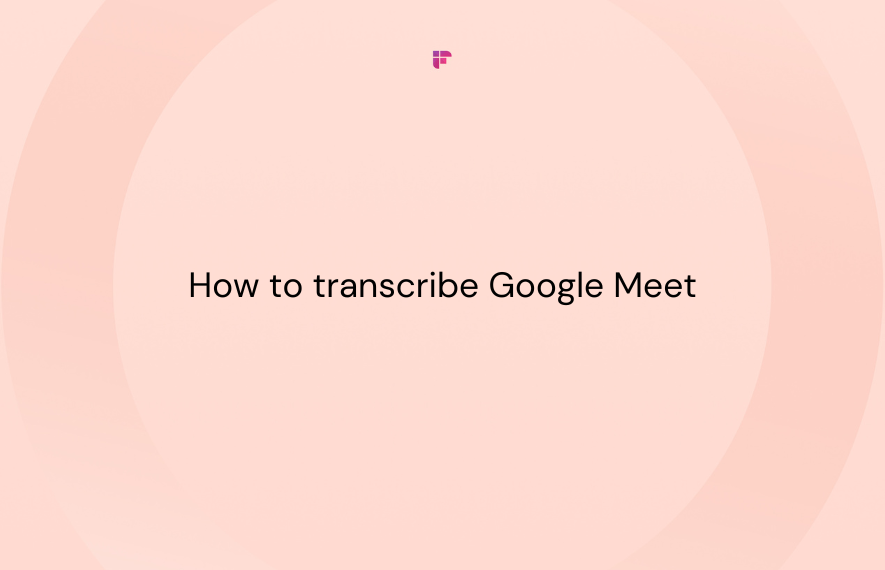Transcription and translation – they sound similar but are very different.
Whether you’re looking to convert speech to text or text from one language to another, it’s crucial to understand the distinction.
In this article, we'll explore the concepts of transcription and translation, delving into their definitions, highlighting their differences, and ultimately helping you determine which one suits your needs.
We'll also introduce you to an incredible transcription tool, so stay tuned for that!
Table of contents:
- What is translation?
- What is transcription?
- Difference between transcription and translation
- Translation vs. transcription: deciding what you need
So, let’s get started.
What is translation?
Translation refers to converting written or spoken content from one language into another while keeping the meaning and context of the original text intact.
Translation demands knowledge beyond the vocabulary and grammar of both languages. For accurate translation, understand the communication's context, purpose, and cultural sensitivity.
In the pre-technology era, businesses only entrusted translation to professional translators, who dedicated their expertise to meticulously transposing the meaning and essence of texts from one language to another.
However, with technological advancements, the field of translation has witnessed significant changes and innovations. Automated translation tools have emerged, aiming to expedite the process.
While these tools provide quick translations, they often lack the nuanced understanding and human touch that professional translators bring to their work.
Where is translation used?
Translation has various use cases in multiple areas, such as:
Education: Translation is vital in facilitating access to diverse educational materials and resources for students and teachers. It enables them to explore different languages, cultures, and perspectives.
Business: Enterprises rely on translation to effectively communicate with customers, partners, and employees across various markets. It helps businesses localize content and expand their presence while building solid relationships.
Entertainment: Translation makes books, movies, music, and games more accessible globally, fostering cultural exchange and appreciation.
Legal: In the legal field, translation is crucial for ensuring accurate understanding and compliance with laws and regulations across different jurisdictions. It helps bridge language gaps, facilitating fair trials and effective resolution of conflicts.
Medical: Translation in healthcare enables effective communication between patients and healthcare providers. It ensures that medical information, services, and support are available in different languages, enhancing patient care and accessibility.
What is transcription?
Transcription refers to converting spoken or recorded audio into written text. It involves capturing every word and sound accurately and faithfully, following grammar, punctuation, and spelling rules.
Transcription requires excellent listening and typing skills, attention to detail, and accuracy. Transcription can be challenging and time-consuming depending on the audio quality, the speakers' clarity, and the content's complexity.
However, with technological advancements in AI, transcription has also witnessed significant innovations. Automated transcription tools have emerged, aiming to simplify the transcription process.
These tools use artificial intelligence and speech-to-text processing to transcribe audio files into text automatically. They can also provide features such as speaker identification, timestamps, editing, and exporting options.
💡 Best transcription software
Fireflies.ai is a leading transcription software that transcribes offline and online meetings and multimedia files with over 90% accuracy in 60+ languages.
Where is transcription used?
Just like translation, transcription also has various use cases in many fields, such as:
Education: Transcription is beneficial in enhancing learning outcomes and accessibility for students and teachers. It allows them to review lectures, presentations, and discussions in text formats.

Business: Organizations transcribe meetings, interviews, webinars, podcasts, and other business communications. It allows them to capture important information, insights, and feedback, improving collaboration and productivity.Related: How to Transcribe Meeting Minutes?
Entertainment: Transcribed content adds value to entertainment. Scripts, subtitles, captions, and lyrics are created through transcription, making content more engaging and accessible to a broader audience.
Legal: In the legal field, transcription is essential for creating official records of court proceedings, depositions, testimonies, and other legal documents. It helps ensure accuracy, transparency, and accountability in the justice system.

Medical: Transcription in healthcare enables efficient documentation of patient records, diagnoses, prescriptions, and other medical data. It helps healthcare providers save time, reduce errors, and comply with regulations.
Difference between transcription and translation
What are the differences between transcription and translation?
The main difference between transcription and translation is that transcription involves converting spoken language into written form in the same language. In contrast, translation involves converting written or spoken speech into another language while preserving the meaning.
Here is a comparison table to illustrate some of the differences between transcription and translation:
Translation vs. transcription: deciding what you need
Depending on your project goals and audience, you may need translation or transcription, or both.
Here are some questions to help you decide what you need:
Best transcription tool: Fireflies.ai
Are you looking for a reliable transcription tool for your business? Your search ends at Fireflies.ai.
Fireflies uses advanced AI technology to automate the transcription process.
Here are some features of Fireflies:
- Meeting transcription: Record, transcribe, and analyze your online meetings, allowing you to focus on the conversation without worrying about note-taking.
- Integrations: Fireflies integrates with tools like Zoom, Google Meet, Slack, and Dropbox.
- Speaker identification and sentiment analysis: Identify speakers automatically and analyze their sentiments, providing valuable insights into the tone and emotions.
- Seamless file uploads: Upload audio/video files and transcribe them within minutes. Fireflies supports MP3, MP4, M4A, and WAV files.
- Smart Search: Use AI Filters to find things like questions, metrics, and tasks from the transcript.
- Topic tracker: Set and find custom keywords and phrases across all your transcripts.
- Export transcript in multiple formats: You can download your transcript in five formats: DOCX, PDF, SRT, CSV, AND JSON.
- Multilingual transcription: Generate transcripts in over 60+ languages, including Portuguese, Spanish, French, Arabic, German, Dutch, and Italian.
To conclude, transcription and translation are two different processes that help you expand your business horizons by making communications and conversations more accessible.
Knowing the difference helps you choose what’s best for your business: whether you need transcription, translation, or both.








![How to Download YouTube Subtitles [The Easiest Way]](/blog/content/images/size/w1000/2024/05/Copy-of-Meeting-etiquette-rules-all-professionals-must-follow---2024-05-02T130226.505.png)